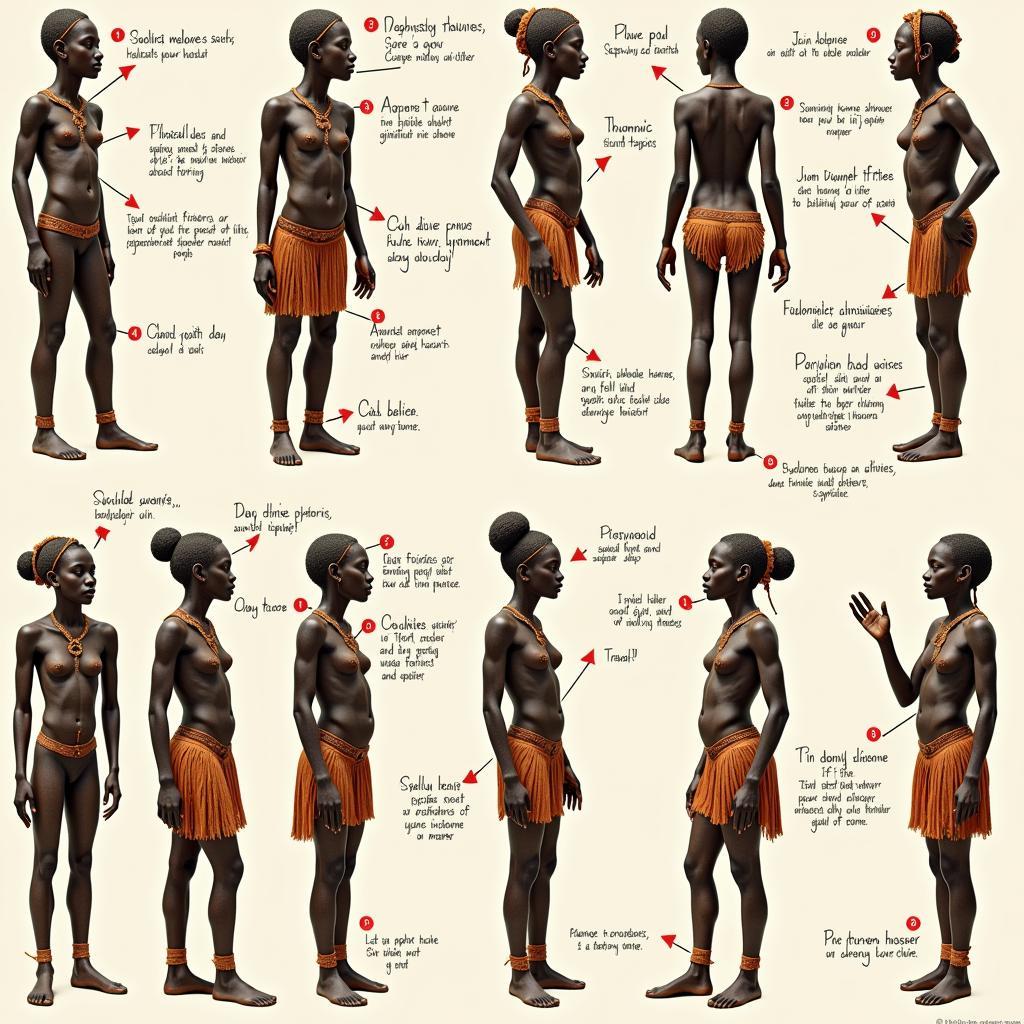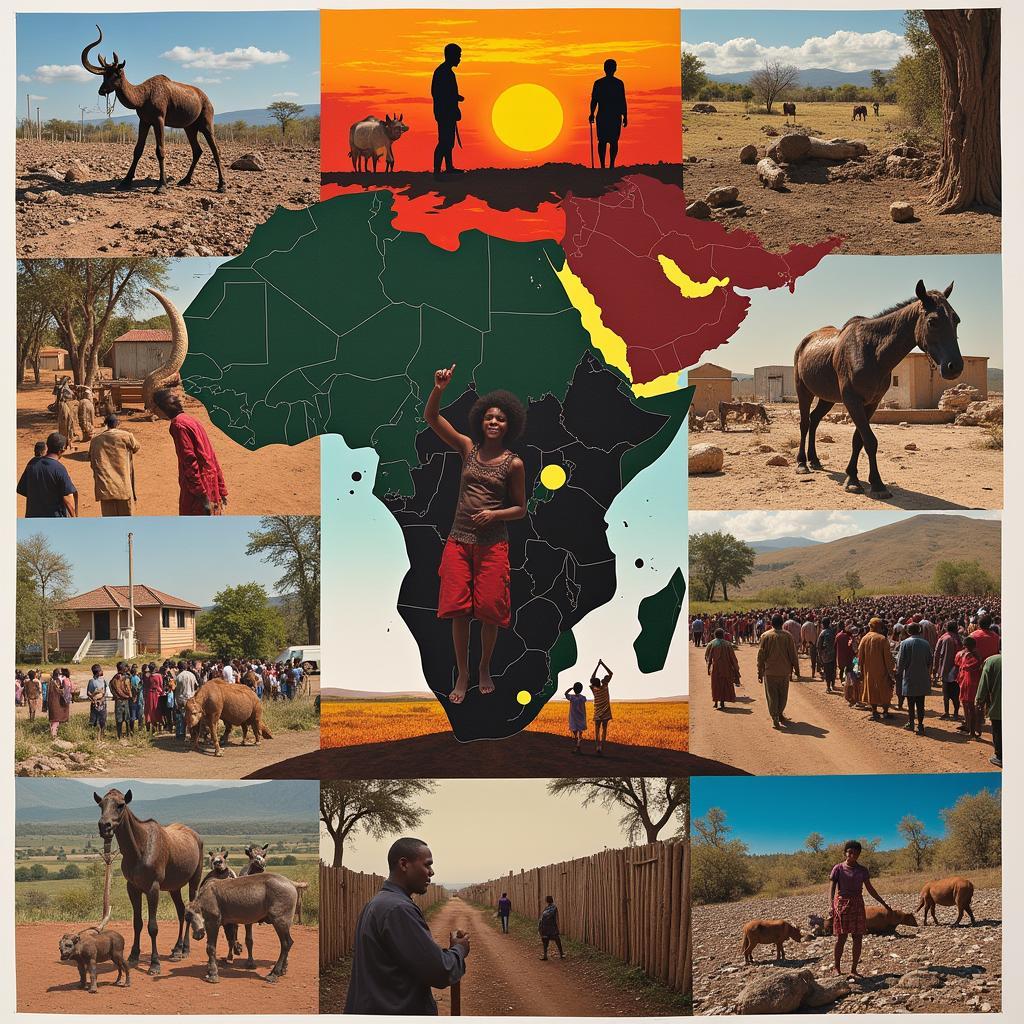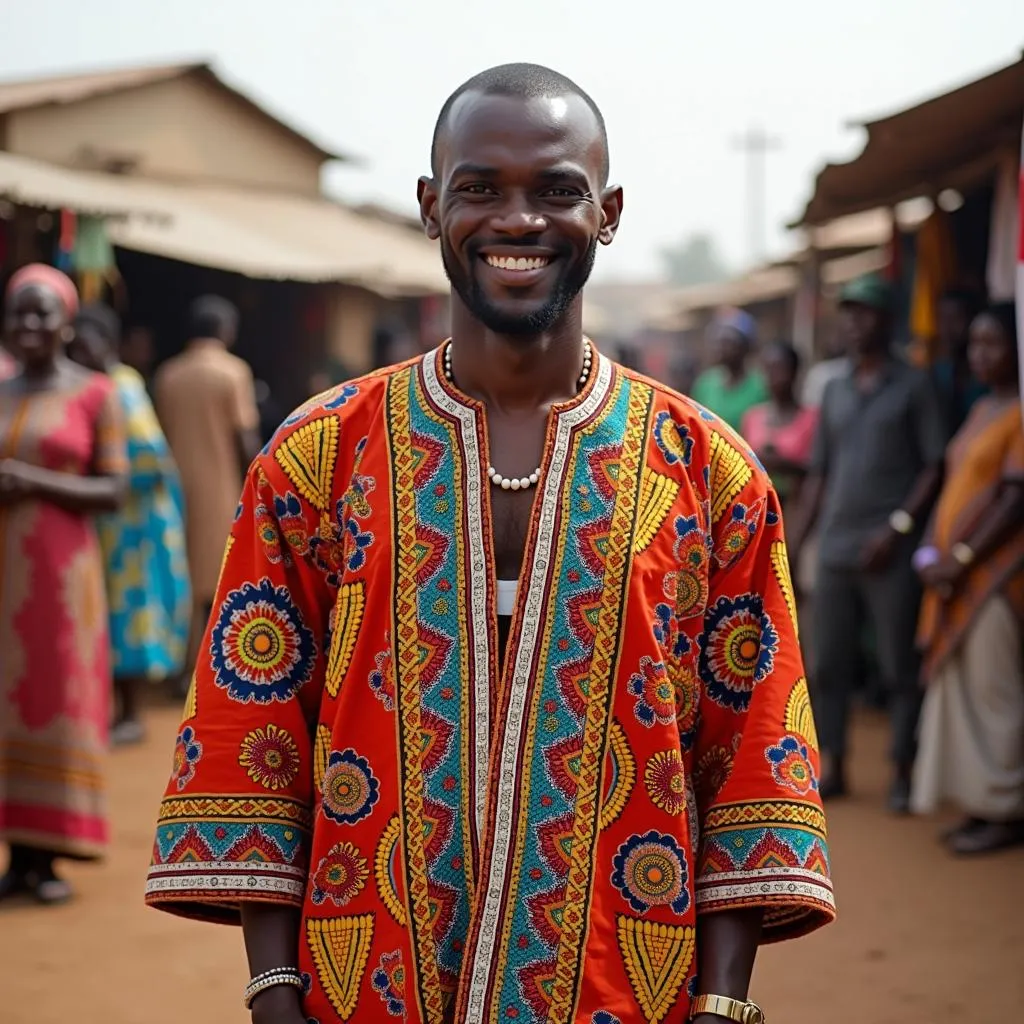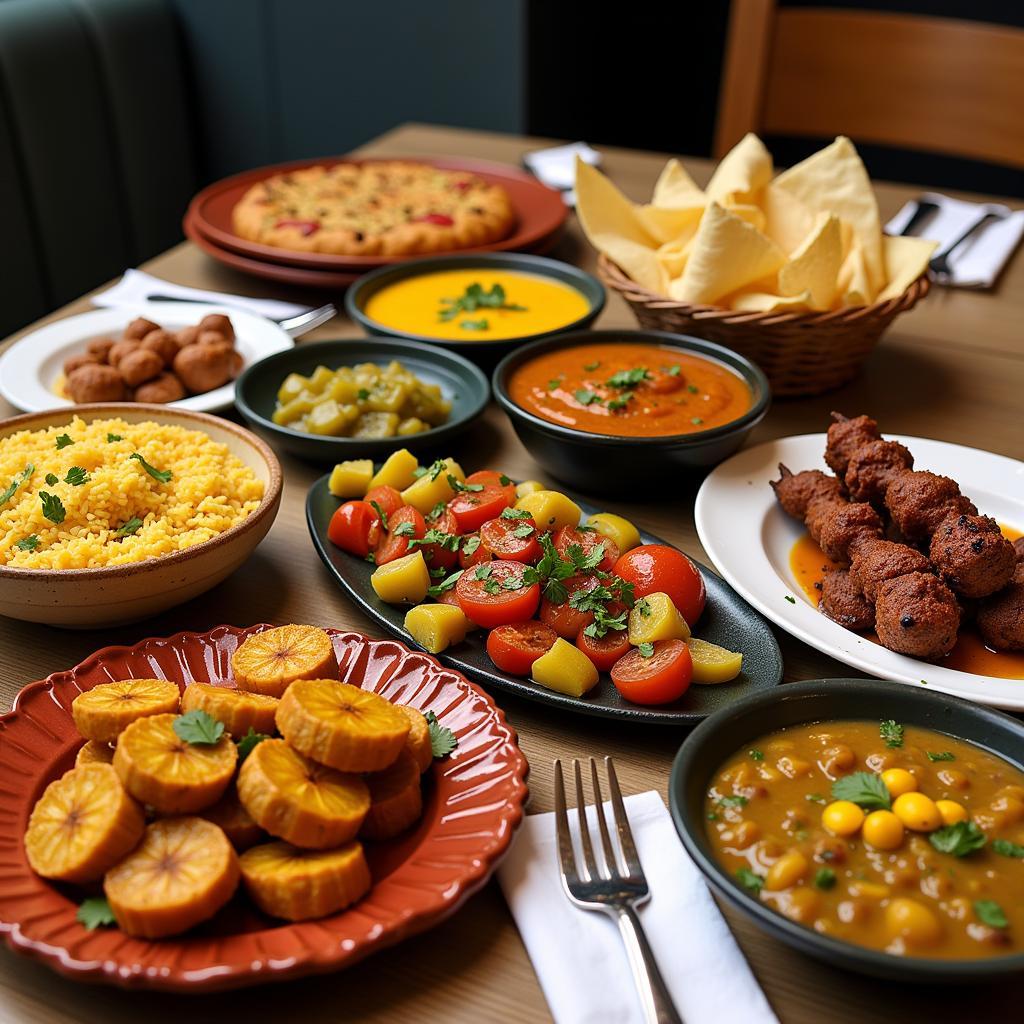Exploring the Art of African Human Figure Drawing
African Human Figure Drawing holds a captivating power, reflecting a diverse tapestry of cultures, traditions, and artistic expressions across the continent. From ancient rock paintings to contemporary masterpieces, the human form has served as a central theme, conveying stories, beliefs, and the very essence of African Life. This exploration delves into the rich history, stylistic nuances, and symbolic significance of depicting the human figure in African art. After this introduction, you can find more information about African face mask.
A Historical Journey Through African Figure Drawing
For millennia, African artists have rendered the human form, leaving behind a legacy that spans diverse geographical regions and historical periods. Early examples, such as the evocative rock art of the Sahara and Southern Africa, offer glimpses into the lives and spiritual beliefs of ancient communities. These depictions, often stylized and symbolic, reveal an intimate connection with the natural world and the human place within it. Later, with the advent of metalworking and other artistic mediums, African human figure drawing evolved, incorporating new materials and techniques. Sculptures in wood, bronze, and ivory brought a three-dimensional aspect to the human form, while intricate textile designs and body painting continued the tradition of adorning the body with artistic expression.
Styles and Symbolism in African Figure Drawing
African human figure drawing is not a monolithic entity but rather a vibrant mosaic of styles, varying significantly from one region and culture to another. Certain artistic traditions emphasize elongated limbs and exaggerated features, imbuing the figures with a sense of dynamism and spiritual power. Others focus on realistic proportions and meticulous detailing, capturing the individual characteristics of the subject. Beyond mere representation, African figure drawing is deeply imbued with symbolism. Body scarification, hairstyles, and adornments often hold specific cultural meanings, conveying social status, lineage, or spiritual affiliations. The positioning and gestures of the figures also play a crucial role in conveying narratives and symbolic messages.
Exploring Regional Variations in Human Figure Drawing
From the powerful sculptures of the Yoruba people of Nigeria to the elegant figures depicted in the art of the Makonde of East Africa, each region boasts its unique artistic language. For example, the Nok culture of ancient Nigeria is renowned for its terracotta figures, characterized by their stylized features and expressive gestures. In contrast, the art of the Benin Kingdom showcases intricate bronze castings that celebrate the power and prestige of the royal court. Understanding these regional variations provides a deeper appreciation for the diversity and richness of African art.
 African Human Figure Drawing: Symbolic Representations in Art
African Human Figure Drawing: Symbolic Representations in Art
african american slavery images
How is African Figure Drawing Used Today?
Today, African human figure drawing continues to thrive, both as a traditional practice and as a source of inspiration for contemporary artists. Many artists draw upon their cultural heritage, reinterpreting ancient motifs and techniques in a modern context. Others explore new avenues of expression, pushing the boundaries of the art form while remaining deeply connected to its roots. This dynamic interplay between tradition and innovation ensures the continued vitality of African human figure drawing.
a play of giant as a satire on african leaders
What Makes African Figure Drawing Unique?
The unique aspect of African human figure drawing lies in its profound connection to culture, spirituality, and the human experience. It is not merely about capturing a likeness but about conveying deeper meanings and narratives. Dr. Abena Oduro, a renowned art historian specializing in African art, explains, “African figure drawing is a visual language that speaks to the soul. It is a testament to the resilience, creativity, and spiritual depth of African cultures.”
 Modern Interpretations of African Human Figure Drawing
Modern Interpretations of African Human Figure Drawing
african american greek goddess
Professor Kwame Asante, a respected scholar of African art and culture, adds, “The human figure in African art is not simply a subject but a vessel for conveying complex ideas about identity, community, and the relationship between humanity and the divine.”
Conclusion
African human figure drawing offers a captivating window into the rich artistic traditions and cultural values of the continent. From ancient rock art to contemporary masterpieces, the depiction of the human form remains a powerful and enduring expression of African identity and creativity. Exploring this art form allows us to connect with the past, appreciate the present, and envision the future of African artistic expression. Continue exploring the captivating world of African human figure drawing and discover the stories etched within each line and curve.
FAQ
- What are the common materials used in traditional African figure drawing? Charcoal, clay, pigments derived from natural sources, and wood are commonly used.
- How do I start learning about African figure drawing? Visiting museums, researching online resources, and attending workshops can be great starting points.
- Are there any contemporary African artists specializing in figure drawing that I should know about? Yes, many contemporary artists are carrying this tradition forward. Researching online and visiting galleries specializing in African art will reveal many talented artists.
- What is the significance of scarification in African figure drawing? Scarification often represents cultural identity, lineage, and social status.
- How does African figure drawing differ from Western figure drawing? African figure drawing often emphasizes symbolism and cultural meaning over strict anatomical accuracy.
For further support, please contact us at +255768904061, email us at kaka.mag@gmail.com, or visit us at Mbarali DC Mawindi, Kangaga, Tanzania. Our customer service team is available 24/7.




